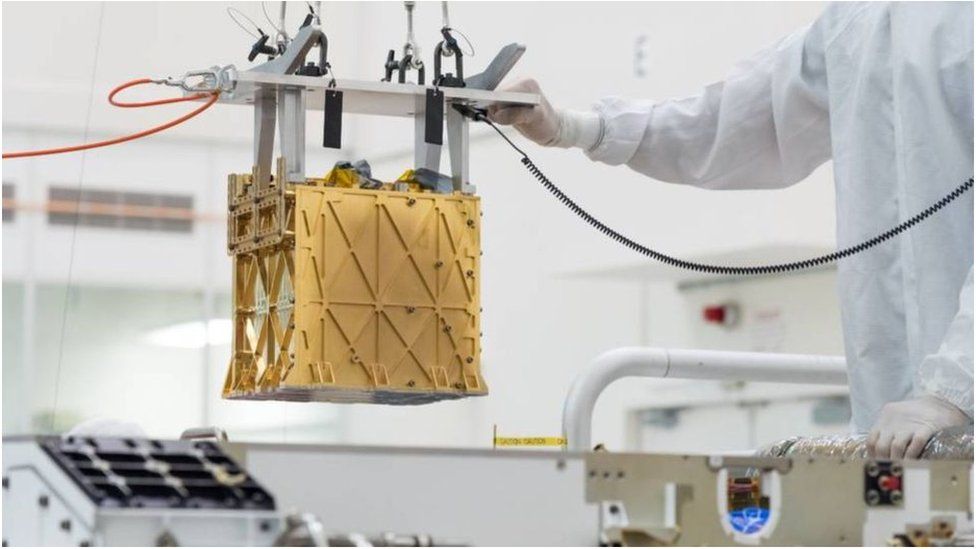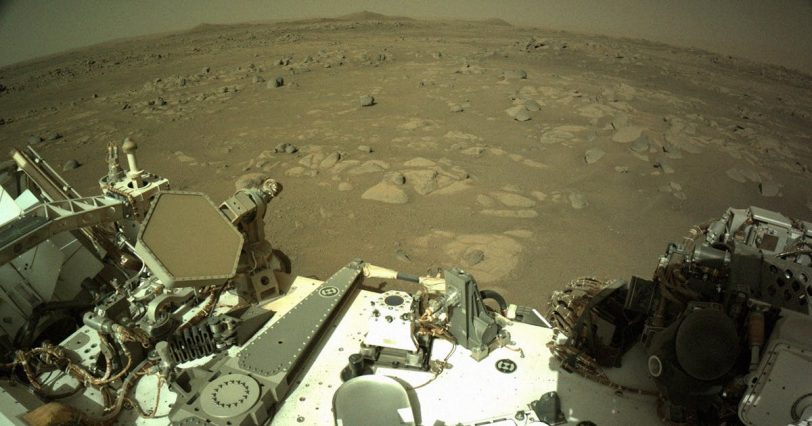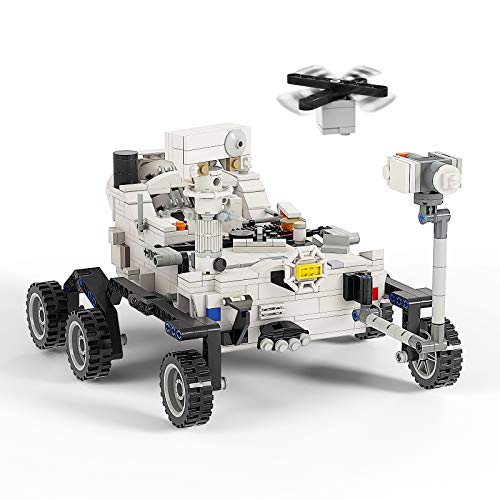It’s the “first instrument to produce oxygen on another world.”
NASA’s Perseverance rover recently sucked up a small amount of carbon dioxide from the Martian atmosphere and converted it to oxygen using a toaster-sized scientific instrument.
It’s a ground-breaking first that could pave the way for a future where space travelers can generate not only air to breathe, but also rocket fuel to return to Earth — all while still on Mars.
The Mars Oxygen In-Situ Resource Utilization Experiment (MOXIE) is a technology demonstration that could one day be scaled up to produce enough propellant to allow a crew of astronauts to take off from the Red Planet’s surface.

“This is a critical first step at converting carbon dioxide to oxygen on Mars,” said Jim Reuter, associate administrator of NASA’s Space Technology Mission Directorate (STMD), in a statement. “MOXIE has more work to do, but the results from this technology demonstration are full of promise as we move toward our goal of one day seeing humans on Mars.”
“Oxygen isn’t just the stuff we breathe,” he added. “Rocket propellant depends on oxygen, and future explorers will depend on producing propellant on Mars to make the trip home.”
According to NASA, it would take about 15,000 pounds of rocket fuel and 550,000 pounds of oxygen to get a crew of four astronauts off the Martian surface. To breathe, though, you’d only need about a metric ton for a crew of four for an entire year, according to MOXIE’s principal investigator Michael Hecht.
It would be difficult and expensive to transport all that oxygen all the way to Mars. That’s why scientists are considering extracting oxygen in situ.
MOXIE had to heat the carbon dioxide to about 1,470 degrees Fahrenheit in order to convert it. It managed to produce about five grams of oxygen, which is about 10 minutes worth of breathable oxygen. It generates up to ten grams of oxygen per hour.
Hecht now intends to “push the envelope” by having MOXIE experiment with new operating modes or extract oxygen at different temperatures.
“MOXIE isn’t just the first instrument to produce oxygen on another world,” said Trudy Kortes, director of technology demonstrations within the Directorate. It’s also the first to lay the groundwork for future missions that could make use of in situ resources.
The first controlled flight on the surface of another planet was achieved by NASA’s Mars helicopter Ingenuity just few days ago, and now this. Hats off to NASA for their incredible efforts to bring Mars nearer to us than ever before.
READ MORE: An Interactive Map Shows Exactly Where NASA’s Rover Perseverance Is





But how will this effect the Mars enviorment?
What will all that carbon do?
What happens to the oxygen? Will there be little pockets of oxygen floating around in the carbon dioxide or does the oxygen disperse? What will it do to the balance on the surface of the planet? My questions are endless! This is so interesting!!
Please pick one unit of measure and stick to it. This article is all over the place. Also, it should be 550,000.
Why then don’t they convert our CO2 to O2 here on earth, and lower the annual carbon emissions.
Milo you would generate a lot more Co2 doing that.
Justin, why would it generate more here than on Mars?
And so it begins for human on mars!
ok they have proven it can be done. so, next step should be taking greenery and other plants and such that converts CO2 into O2. plant them in a bio-dome or something . make oxygen in them for humans to live and breath.